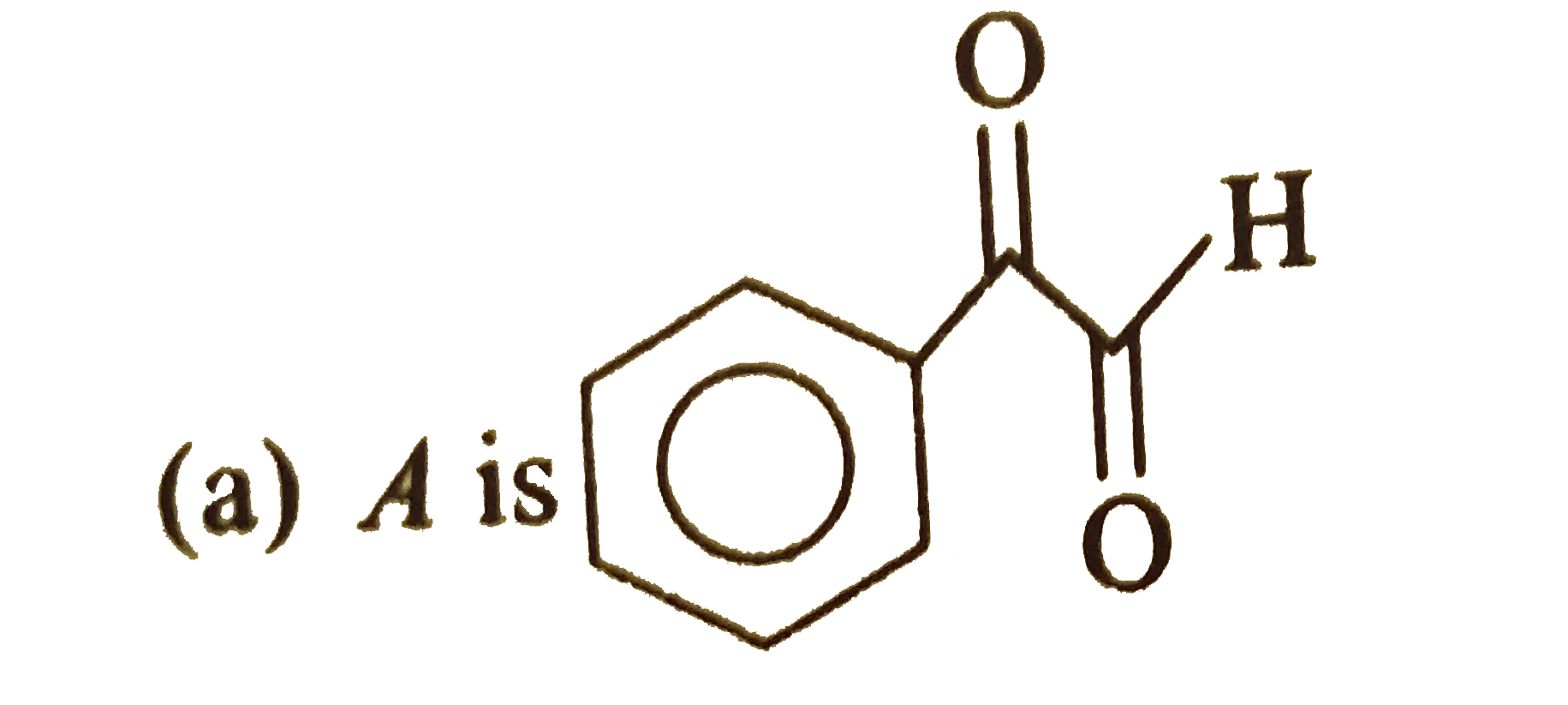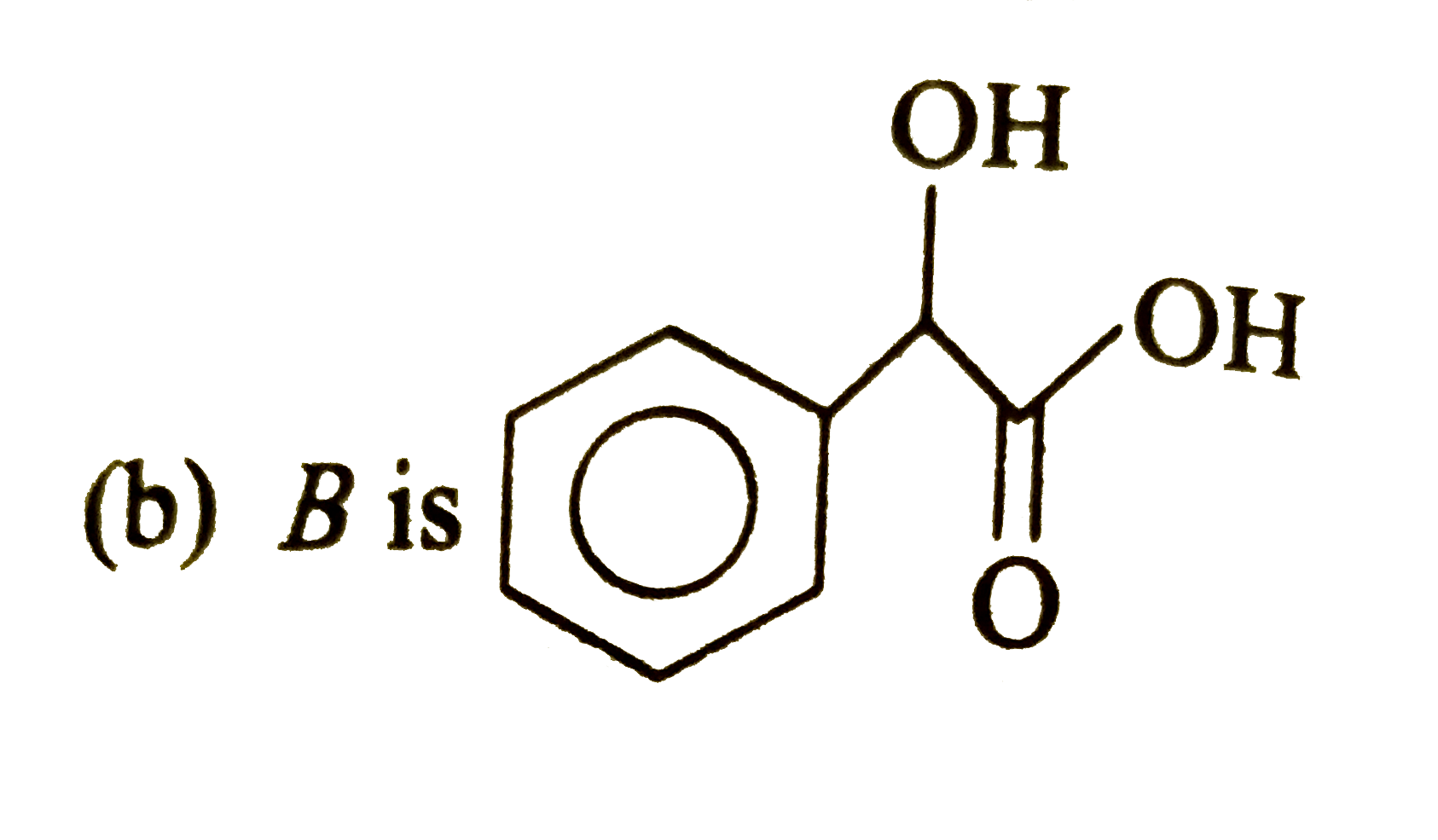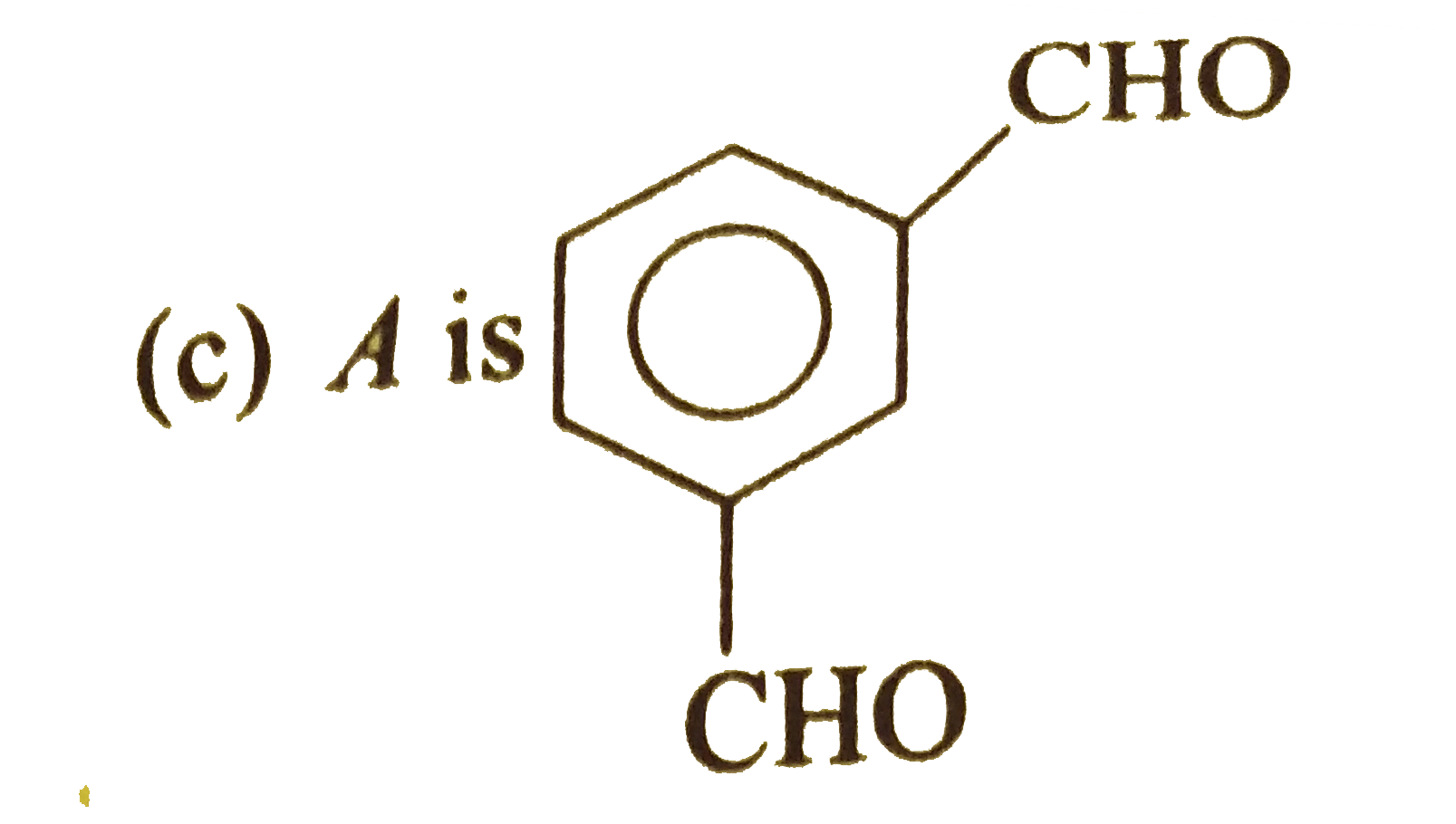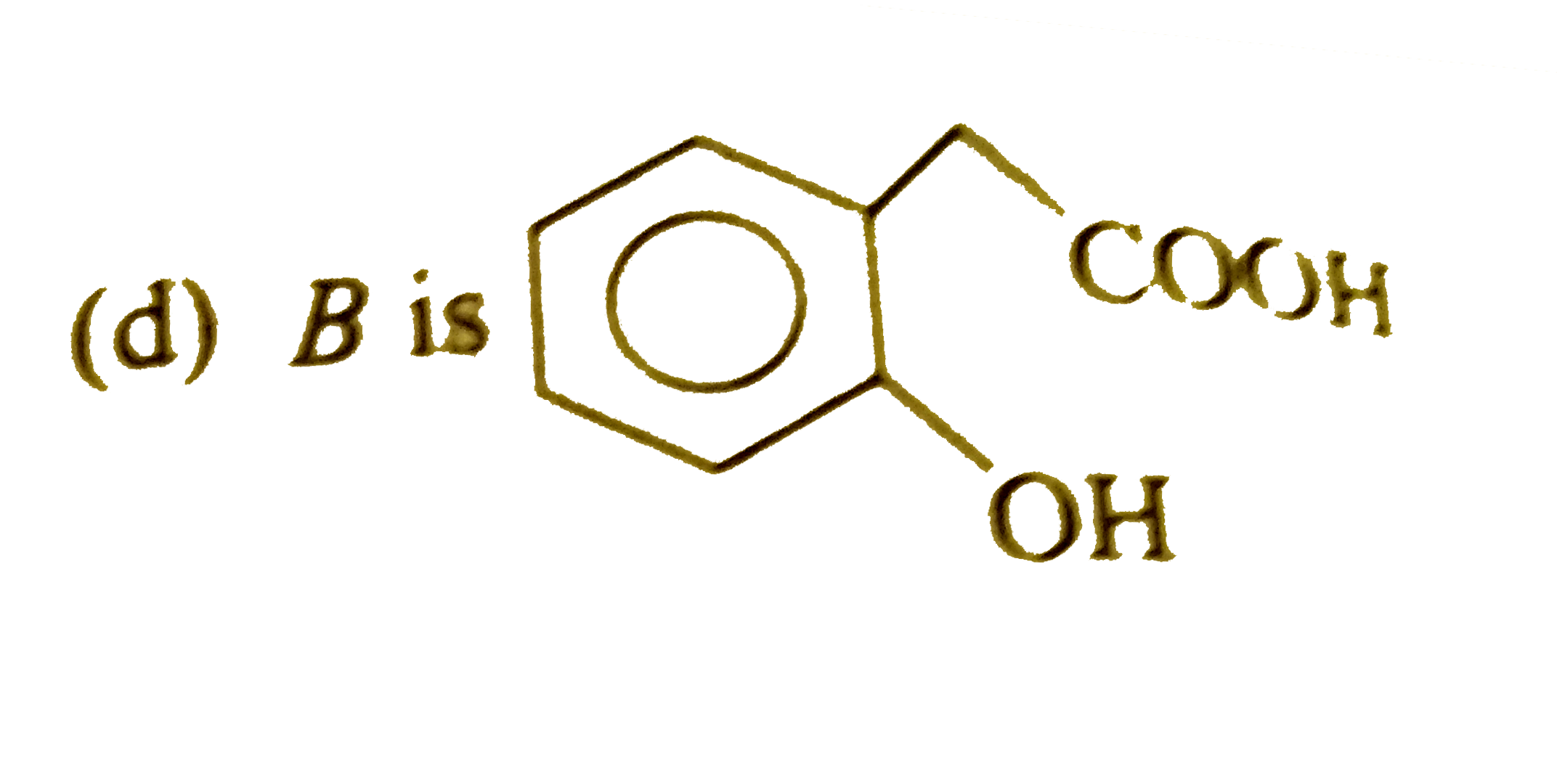An organic compound (A) on treatment with acetic acid in the presence of sulphuric acid produces an ester (B). (A) on mild oxidation gives (C),(C) with 50% potassium hydroxide followed by acidification with dilute hydroxide acid generates (A) and (D),(D) with phosphorus pentachloride followed by reaction with ammonia gives (E),(E) on dehydration produces hydrocyanic acid. Identify the compounds (A),(B),(C),(D), and (E).
(A=CH3OH,(Methanol),B=CH3COCH3,(Methyl ethanoate)),(C=HCHO,(Methanal),D=HCOOH,(Methanoic acid)),(E=HCONH2,(Formamide or methanamide),)
Topper's Solved these Questions
Similar Questions
An organic compound (A) reacts with ethanol to give (B) and (C). On acid hydrolysis (C ) yields (B) and (D). oxidation of (D) gives (B). (B) is an acid and forms a salt with Ca(OH)2 which on dry distillation gives (E ), C3H6O. Give the structures of (A) to (E ) with proper reasoning.
View SolutionAn ester C4H8O2 (A) on treatment with excess of methyl magneium chloride followed by acidification gives an alcohol (B) as the sole organic product. Alcohol (B), on oxidation with NaOCl followed by acidification gives acetic acid. Deduce the structures of (A) and (B) and show the reactions involved .
View Solution
Knowledge Check
An organic compound on oxidation produces acetic acid , but on dehydration it gives propylene. It would like to be
An-propyl alcoholBiso-propyl alcoholCtert butyl alcoholDsec. butyl alcoholThe compound which on acid hydrolysis followed by oxidation gives acetic acid is
ACH3IBCH3ClCClCH2CH2ClDCH3CHCl2Compound (A) C8H6O2 on treatment with aq. NaOH followed by acidification gives (B) C8H8O3 which on oxidation gives benzoice acid only :
A B
B C
C D
D
An ester (A) (C4H8O2) , on treatment with excess methyl magnesium chloride followed by acidification, gives an alcohol (B) as the sole organic product. Alcohol (B), on oxidation with NaOCI followed by acidification gives acetic acid. Deduce the structures of (A) and (B). show the reactions involved.
View SolutionAn organic compound (A) on treatment with ethyl alcohol gives a carboxylic acid (B) and compound (C). The hydrolysis of (C) under acidic conditions gives (B) and (D). Oxidation of (D) with KMnO4 also gives (B). (B) on heating with Ca(OH)2 gives (E) (molecular formula, C3H6O). (E) does not give Tollens test and does not reduce Fehling's solution but forms a 2,4−dinitrophenyl hydrazone. Identify (A),(B),(C),(D), and (E).
View SolutionState two uses each of the following compounds:
(a) Sodium hydroxide
(b) Chlorine
(c) Hydrogen
(d) Hydrochloric acid.
View SolutionA halogen compound A on hydrolysis with dilute alkali followed by acidification gives acetic acid. The compound X is
View SolutionA halogen compound 'A' on hydrolyses with dilute alkali followed by acidification gives acetic acid. The compound X is:
View Solution
